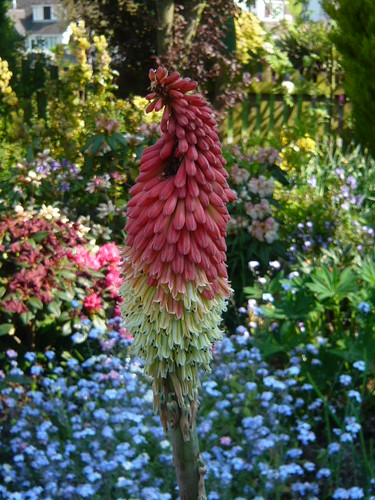When times are hard you need to use your imagination to enjoy a cheaper Christmas. Whilst these ideas are focused on the gardeners amongst us it is possible to invent garden themed ideas for children. Try word games with a floral theme or a winter wild flower walk (what can be found in the Christmas hedgerows?)

Low Cost Christmas for Gardeners
No one wants to be reminded of current economic woes and gardens are a great place to put such troubles behind us. Here are ideas for cheap presents and cost saving activities centred around gardening.
Free Stuff.
- Many local horse riding schools and stables have more manure than they can cope with. Many stables give it away free if you are willing to bag it up yourself. Look for the well rotted section often at the bottom and back of the pile. My family always thought it strange that Dad asked for ‘muck’ for birthdays and Christmas but it saved on presents and fertiliser cost.
- Seed catalogues make interesting reading in the cold, dark evenings and they will be sent out free by many companies.
- Take a trip to see public gardens or winter displays like these London Christmas Lights
- Gardeners are usually happy to give cuttings, seeds or plant offsets to friends and neighbours. As herbaceous plants are divided at this time of year look out for plants to scrounge. Public beds are often cleared of viable plants to make room for the next season and I have scrounged bulbs and plants that were destined for the council compost heap.
- A home made present can be treasured beyond price. Richard made me a pair of compost heaps on an E shape with moveable slats in the front from old fencing and some bought posts. Rustic tepees can be made from Hazel twigs and a willow screen could be fashioned depending on available material.
- Many wild life habitats can be made for free. Build something that will attract useful creatures. I buried an old dustbin as a pond which is now full of frogs. Tie hollow tubes together to make a bees nest or just pile up leaves and twigs for hibernating hedgehogs.
- Read internet blog sites like gardenerstips and think of them as free gardening magazines. You could set up RSS feeds and add them to favourites for a relative who was less confident about using the internet.

Good Value Presents
Membership of gardening related clubs can be very economic. See the list of great offers Garden society memberships or check with your local society.
- National garden centre gift vouchers and commercial garden centres like Wyvale vouchers allow gardeners to choose what they want, when they want it.
- Gardening books are available in great variety & quantity with most Charity shops also have cheap selection. There are only so many general gardening books that anyone needs. Monographs about a plant species or a good reference like Hilliers manual of Trees & Shrubs, the RHS plant or gardenfinder are a fair choice. Libraries are free and you can usually get them to order specific books on youe behalf.
- As garden centres fill up their shelves with Christmas baubles they often put gardening dry goods on sale at a discount. Buy now for next season and wrap it as a present.
- Fruit trees and bushes are long term good presents as they will produce a valuable crop for many years. I name my fruit trees after relative as a memorial or to remember the gift.
- Split your perennial plants to make gifts and pot up strawberry runners for the same reason.
- Use conifer and holly branches for trimmings and a wreath.
Merry Christmas
What will you be buying for the gardeners in your family this Christmas apart from National Garden tokens? On the basis that it is the thought that counts, here are a few ideas to help with the thinking process.
Organic Matter
This covers seeds, plants, tubers and bulbs but also a prized gift like manure and compost.
Seed catalogues and web sites have a vast array of new and trusty old favourites but gardeners who specialise may want a say in the variety, size or appropriateness of a particular plant. Since most gardens can only cope with a limited number of varieties it is best to ask for a wish list or select something else.
Despite the comment above most gardeners would be happy to receive some summer flowering Lilies or other bulbs that can always be planted in a pot.
Equipment
Good quality tools make the jobs in the garden far more pleasurable. Better a good trowel than a cheap spade although a stainless steel spade would suit me down to the ground (literally).
Watering in the summer garden can be an issue and there are many watering devices for collecting and distributing the water to where needed. Strangely I don’t think you can have too many bits of kit to help you do this job so a gift from this range may be useful.
Just because a tool in the garden shed looks old, worn or damaged it doesn’t follow that a new one is wanted as it may be fun making do and mending.
Artistic gifts are a matter of taste and sculptures, garden features and ornaments need to chime with the recipient, the garden and the other stakeholders, so choose with care.
Media
Below are some gardening books to consider. All are available from Amazon by clickingh on the image.
membership of a society like the RHS, Alpine Gardens Socy, or Royal National Rose Society for example may be appropriate. Most offer year round benefits and even free seeds from some clubs.
Gardeners World subscriptions to the monthly magazine or Gardens Illustrated are other potential ideas click on the right.


…
Read More Read More

 pson & Morgan
pson & Morgan 





































